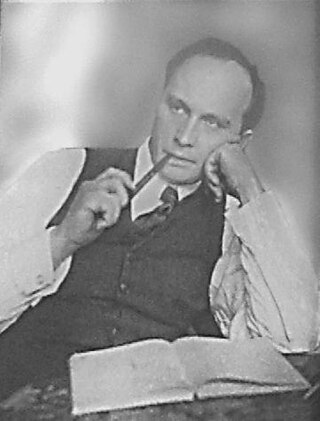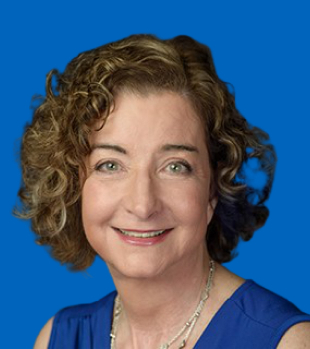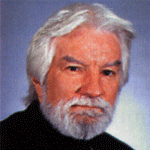The Schön scandal concerns German physicist Jan Hendrik Schön who briefly rose to prominence after a series of apparently successful experiments with semiconductors that were discovered later to be fraudulent. Before he was exposed, Schön had received the Otto-Klung-Weberbank Prize for Physics and the Braunschweig Prize in 2001, as well as the Outstanding Young Investigator Award of the Materials Research Society in 2002, all of which were later rescinded. He was also supposed to receive the William L. McMillan Award from the University of Illinois in 2002, but due to the intervention of Daniel C. Ralph of Cornell University, Schön was never given the award.
A room-temperature superconductor is a hypothetical material capable of displaying superconductivity above 0 °C, operating temperatures which are commonly encountered in everyday settings. As of 2023, the material with the highest accepted superconducting temperature was highly pressurized lanthanum decahydride, whose transition temperature is approximately 250 K (−23 °C) at 200 GPa.

Paul Ching Wu Chu is a Chinese-American physicist specializing in superconductivity, magnetism, and dielectrics. He is a professor of physics and T.L.L. Temple Chair of Science in the Physics Department at the University of Houston College of Natural Sciences and Mathematics. He was the president of the Hong Kong University of Science and Technology from 2001 to 2009. In 1987, he was one of the first scientists to demonstrate high-temperature superconductivity.
The Woodstock of physics was the popular name given by physicists to the marathon session of the American Physical Society’s meeting on March 18, 1987, which featured 51 presentations of recent discoveries in the science of high-temperature superconductors. Various presenters anticipated that these new materials would soon result in revolutionary technological applications, but in the three subsequent decades, this proved to be overly optimistic. The name is a reference to the 1969 Woodstock Music and Art Festival.
Malcolm Roy Beasley is an American physicist. He is professor emeritus of applied physics at Stanford University. He is known for his research related to superconductivity.

Jorge Eduardo Hirsch is an Argentine American professor of physics at the University of California, San Diego. Hirsch received a PhD in physics from the University of Chicago in 1980 and completed his postdoctoral research at the Kavli Institute for Theoretical Physics at the University of California, Santa Barbara in 1983. He is known for inventing the h-index in 2005, an index for quantifying a scientist's publication productivity and the basis of several scholar indices.

Lev Vasilyevich Shubnikov was a Soviet experimental physicist who worked in the Netherlands and USSR. He has been referred as the as 'the founding father of Soviet low-temperature physics'. He is known for the discovery of the Shubnikov–de Haas effect and type-II superconductivity. He also one of the first to discover antiferromagnetism.

Johannes Georg Bednorz is a German physicist who, together with K. Alex Müller, discovered high-temperature superconductivity in ceramics, for which they shared the 1987 Nobel Prize in Physics.

Karl Alexander Müller was a Swiss physicist and Nobel laureate. He received the Nobel Prize in Physics in 1987 with Georg Bednorz for their work in superconductivity in ceramic materials.
Tom Timusk is a Professor Emeritus of Physics at McMaster University in Hamilton, Ontario Canada. He is a retired member of the Condensed Matter research team at McMaster. He was an immigrant from Estonia displaced by Second World War. He settled in Hamilton, Ontario Canada.

Bernd T. Matthias was a German-born American physicist credited with discoveries of hundreds of elements and alloys with superconducting properties. He was said to have discovered more elements and compounds with superconducting properties than any other scientist.

Laura H. Greene is the Marie Krafft Professor of Physics at Florida State University and chief scientist at the National High Magnetic Field Laboratory. She was previously a professor of physics at the University of Illinois at Urbana-Champaign. In September 2021, she was appointed to the President's Council of Advisors on Science and Technology (PCAST).
Pierre Wiltzius is a physicist, the Executive Dean of the College of Letters and Science and Susan & Bruce Worster Dean of Science at the University of California, Santa Barbara and an Elected Fellow of the American Physical Society and of the American Association for the Advancement of Science.

Thomas Maurice Rice, known professionally as Maurice Rice, was an Irish theoretical physicist specializing in condensed matter physics.

Paul Michael Grant was an American/Irish physicist and science writer who was involved in discovering and elucidating the structure of Yttrium Barium Copper Oxide which was important as the first high temperature superconductor to exhibit superconductivity above the boiling point of Nitrogen. He was a co-author of IBM's US patent application covering their preparation.
John Kenneth Hulm was a British-American physicist and engineer, known for the development of superconducting materials with applications to high-field superconducting magnets. In 1953 with George F. Hardy he discovered the first A-15 superconducting alloy.
Peter Rudolf Wyder was a Swiss physicist and a professor of experimental solid-state physics at the Radboud University Nijmegen in the Netherlands from 1967 until 1988 and in 1990. Wyder later served as director of the Laboratoire National des Champs Magnétiques Intenses in Grenoble, France.

Joël François Mesot is a Swiss physicist and academic. He is currently the President of the Swiss Federal Institute of Technology in Zurich, also known as ETH Zurich.
Ana Celia Mota is a retired Argentine-American condensed matter physicist specializing in phenomena at ultracold temperatures, including superfluids and superconductors. She is a professor emerita at ETH Zurich in Switzerland.
Ranga P. Dias is a researcher and academic who specializes in condensed matter physics. He is an assistant professor in the departments of Mechanical Engineering and Physics and Astronomy at the University of Rochester (UR), and a scientist at the UR Laboratory for Laser Energetics.










